Board meetings are some of the most critical meetings in a company. Irrespective of the importance attached to them, that does not mean they would be free from unproductivity. Many times, they never fully accomplish all they intended to execute. Planning them with an agenda is one of the most productive steps an organizer can take.
An agenda improves the productivity of the meeting because it serves as a guide. A proper plan highlights the issues to be discussed and assigns a person to attend to each specific issue. Where this is available, all members are allowed to participate, and the chairperson of the board can also navigate from item to item with ease.
Without a doubt, this saves time and guarantees productivity because the board is bound to follow the comprehensive plan. However, the importance of meetings underscores the need for them to be efficient, and for this to be done, a comprehensive plan is necessary.
This article shares the essential details about such a meeting, including what it should contain, its importance, its structure, and essential tips for preparing it. Summarily, this article provides a guide to preparing agendas the right way. There are also attached templates to further assist you.
Download Templates
The process of building a meeting agenda might still appear complex; this is why this website has provided free downloadable templates. These templates give a comprehensive guide to what they should contain.
You don’t have to go through the hassle of drawing up your own from scratch. Instead, select the copy that fits your meeting from the templates provided here to develop your own.
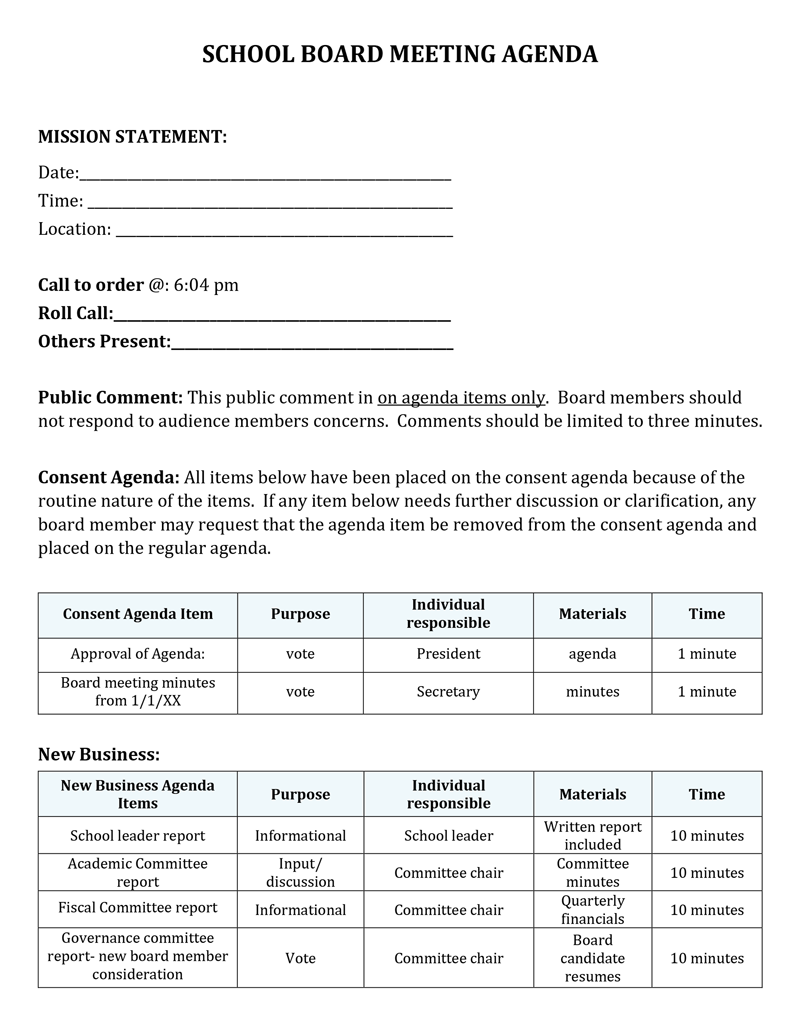
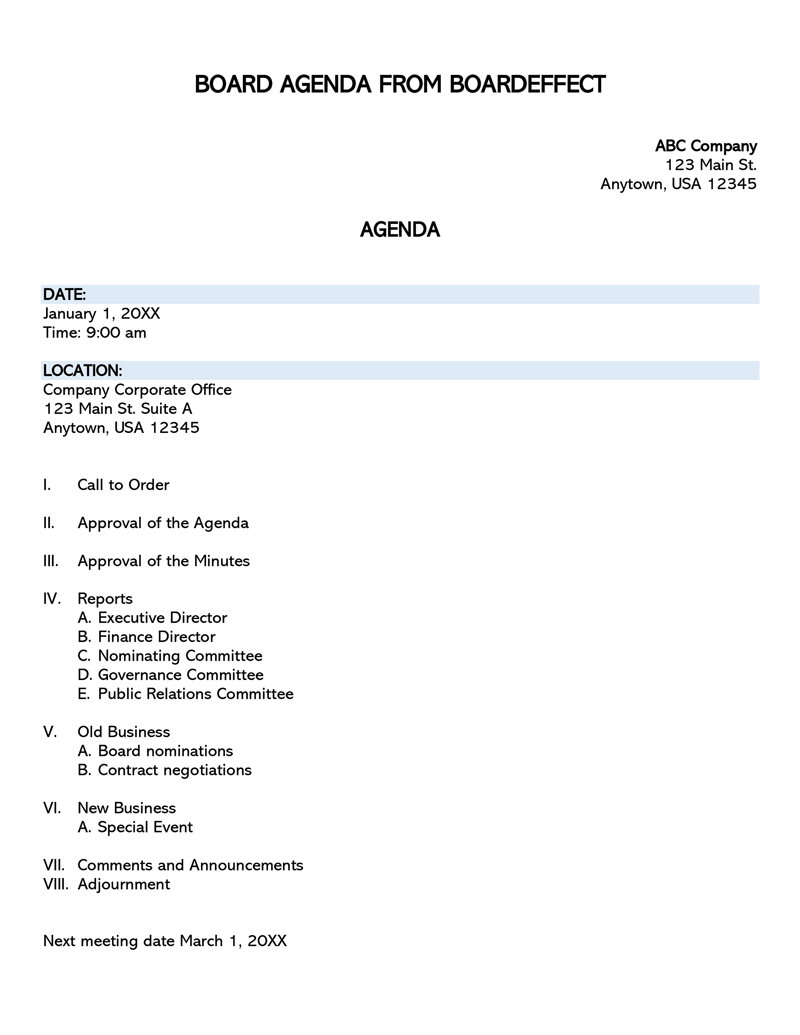
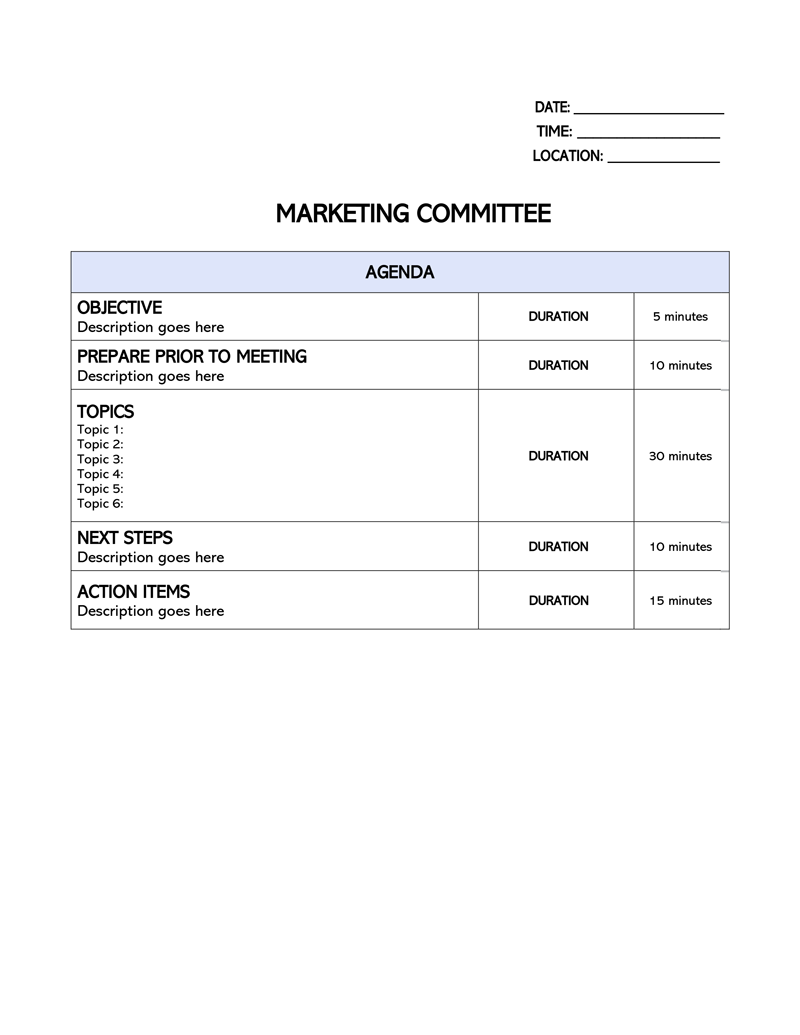
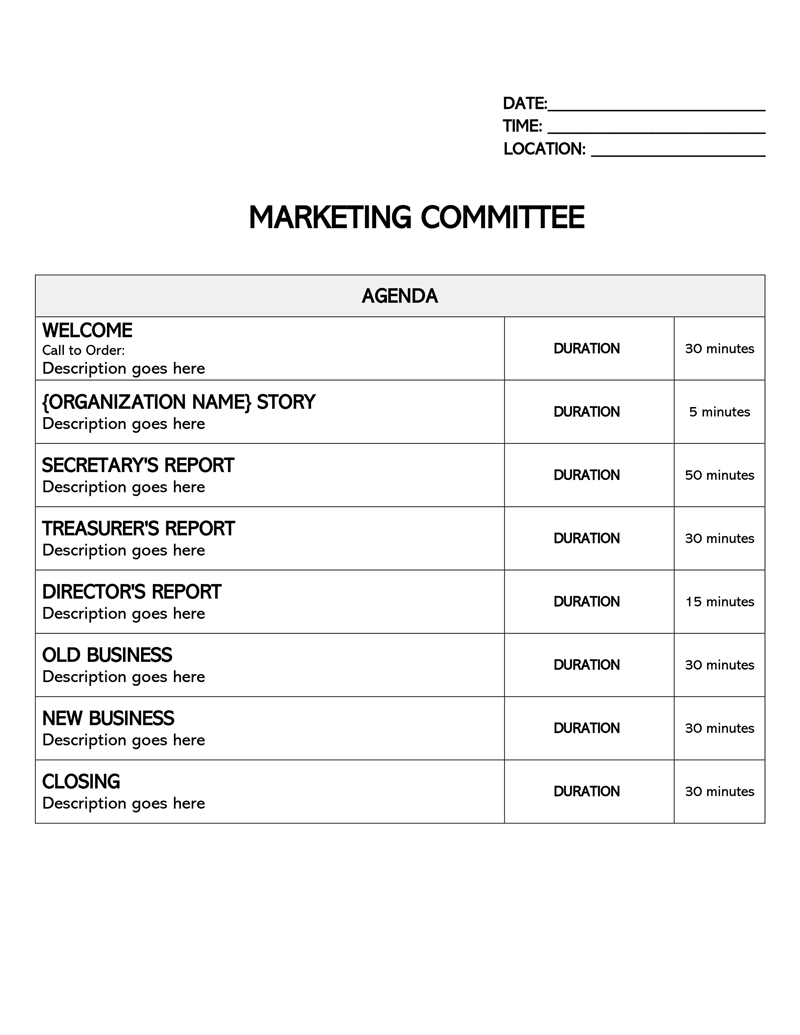
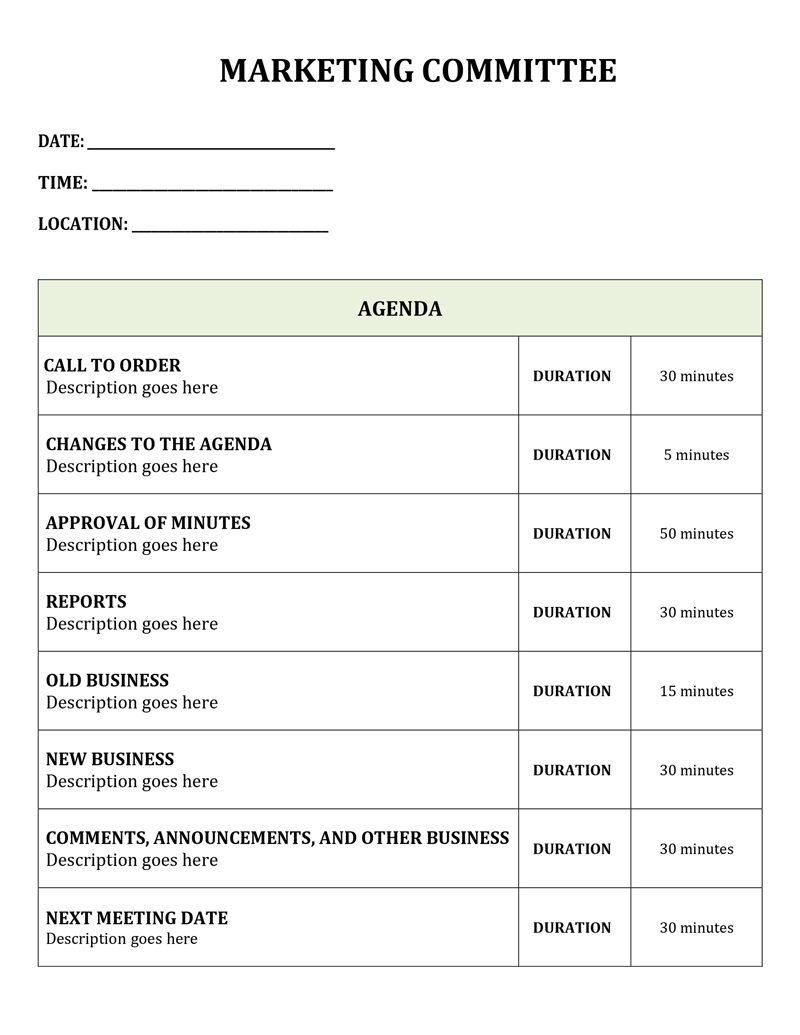
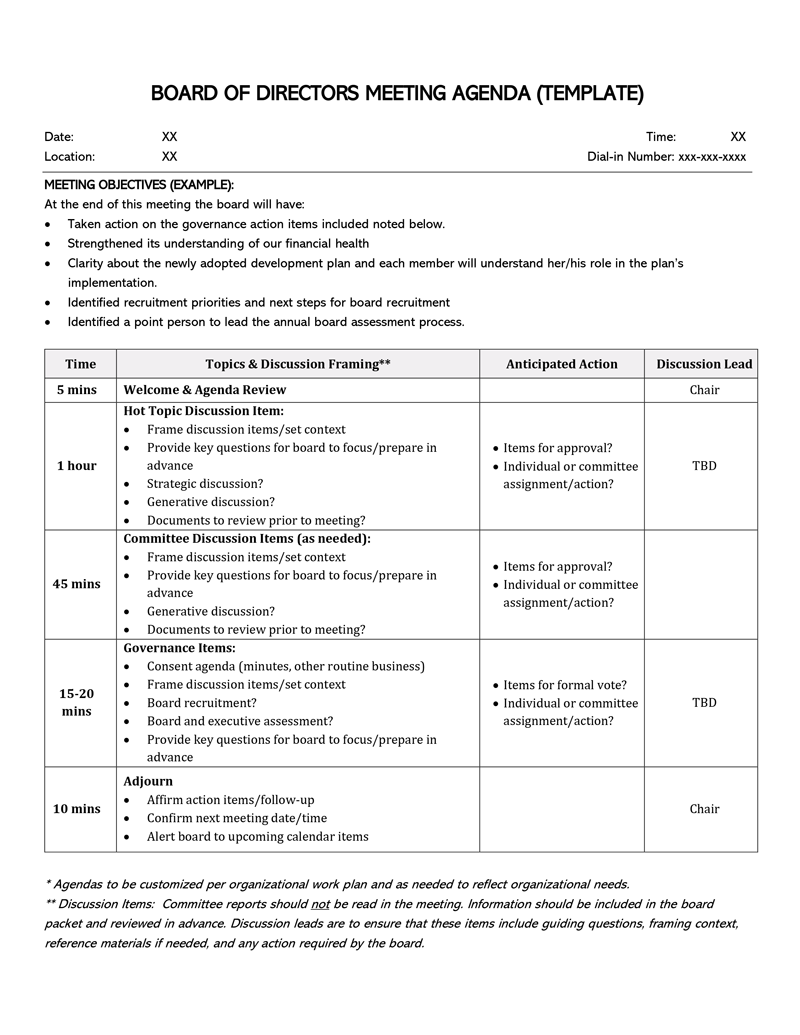
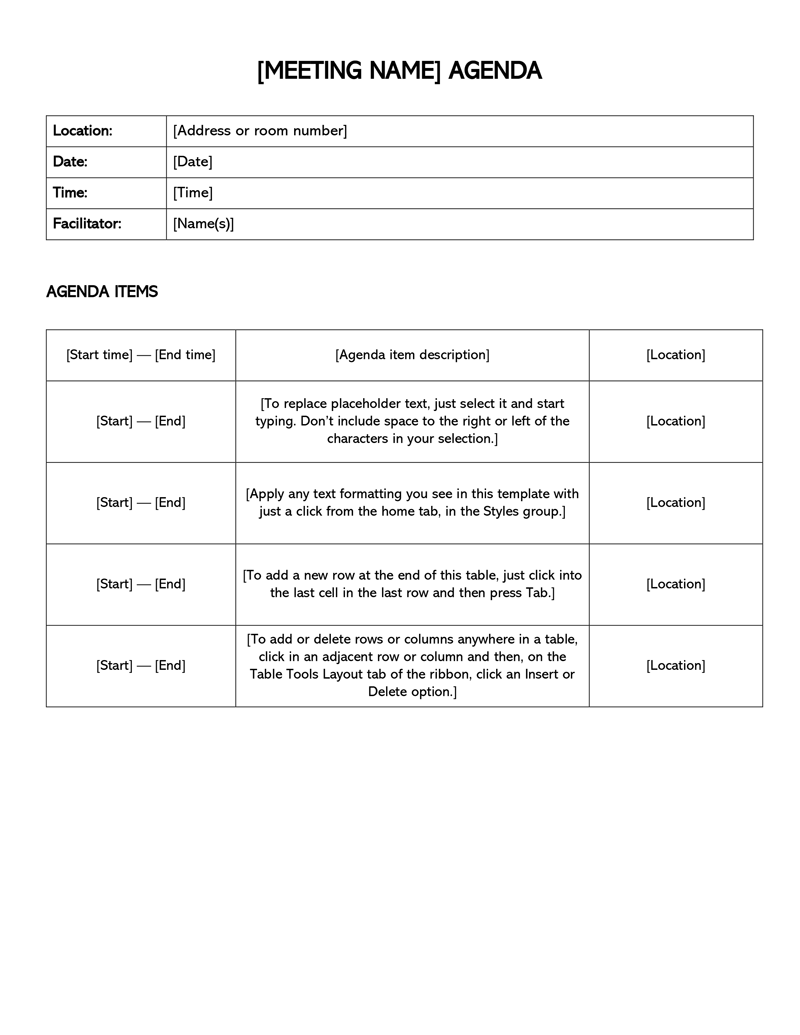
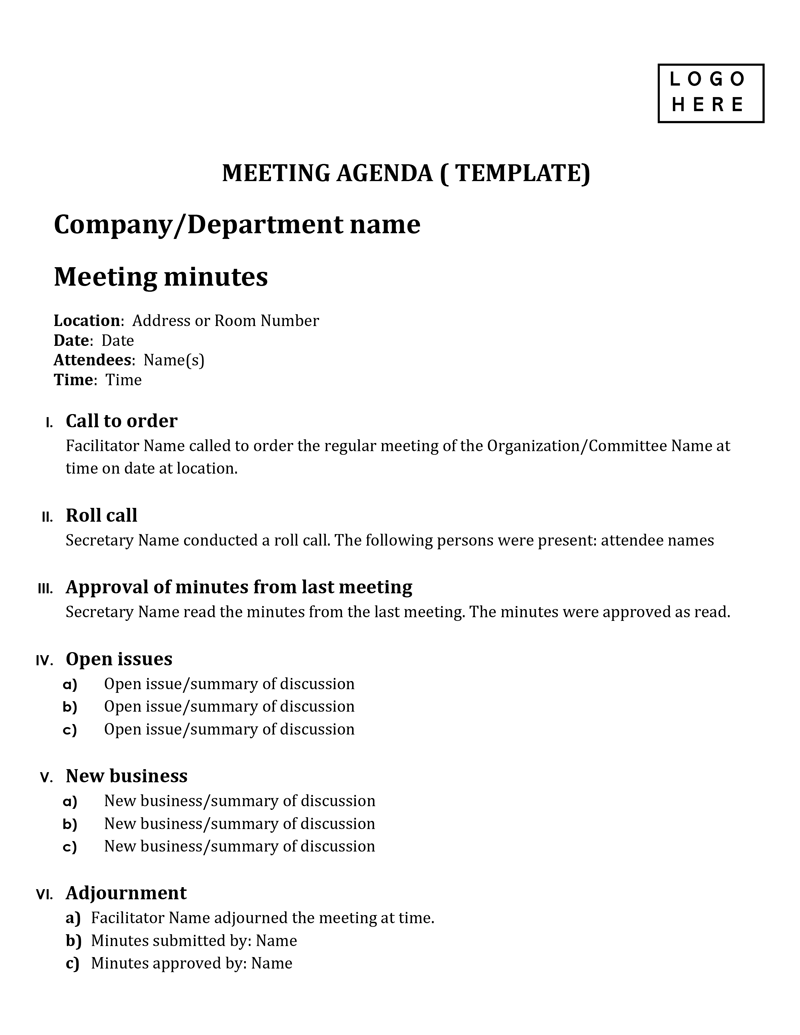
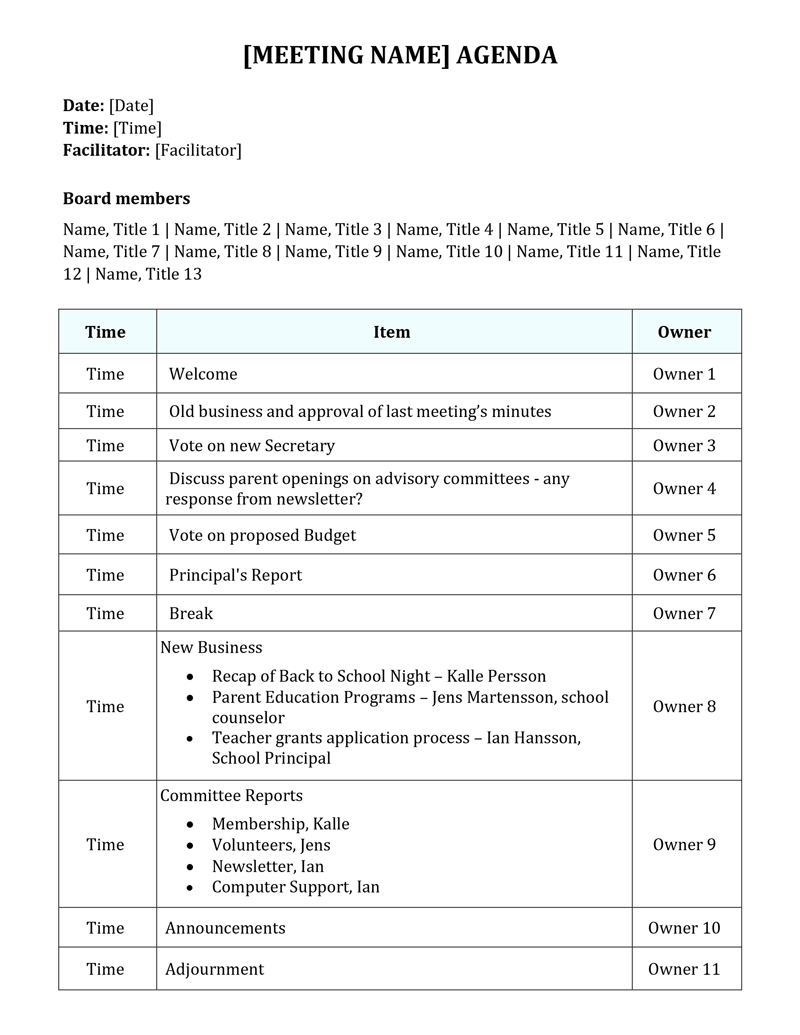
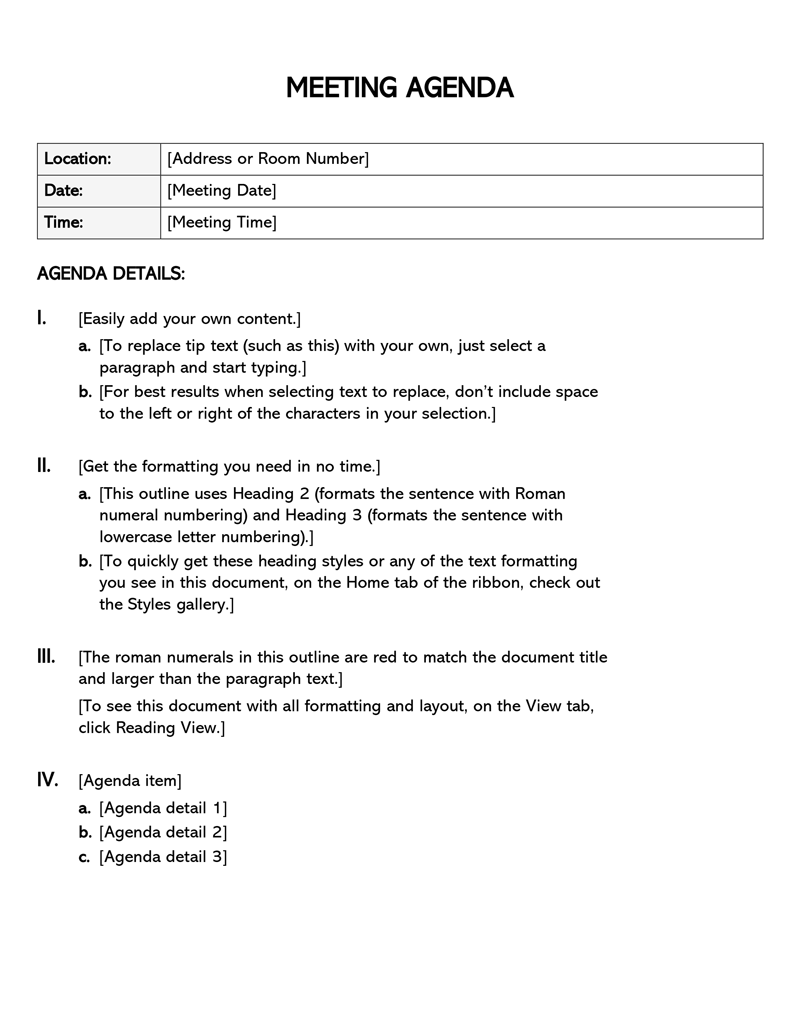
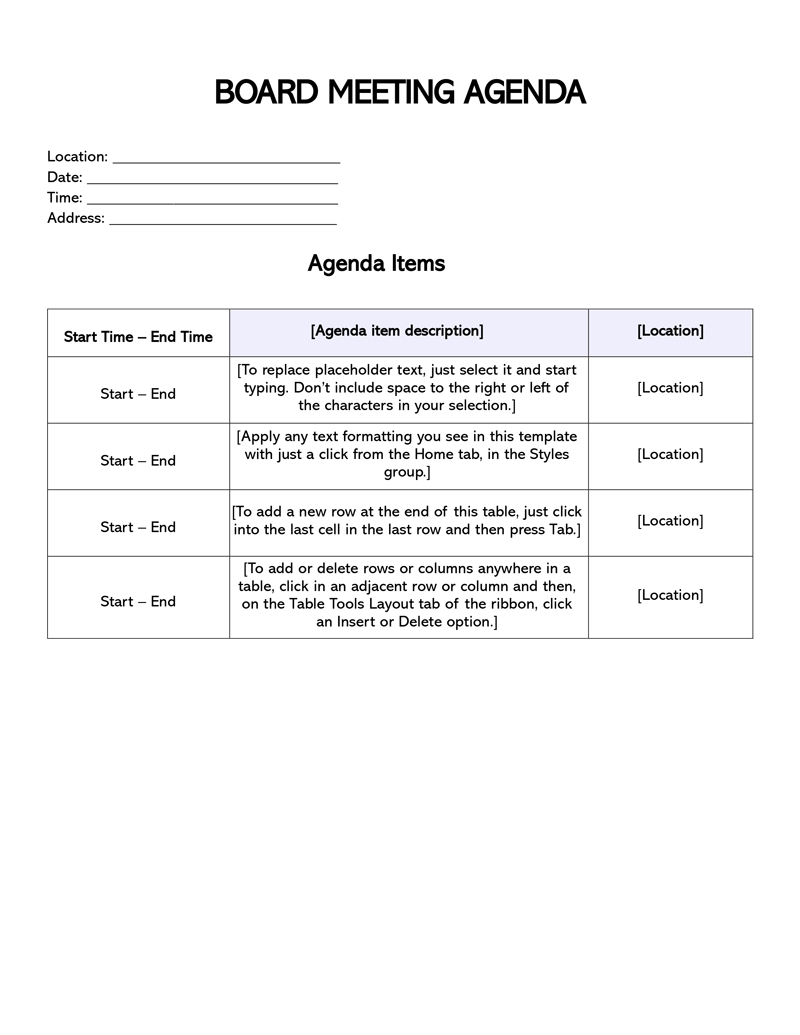
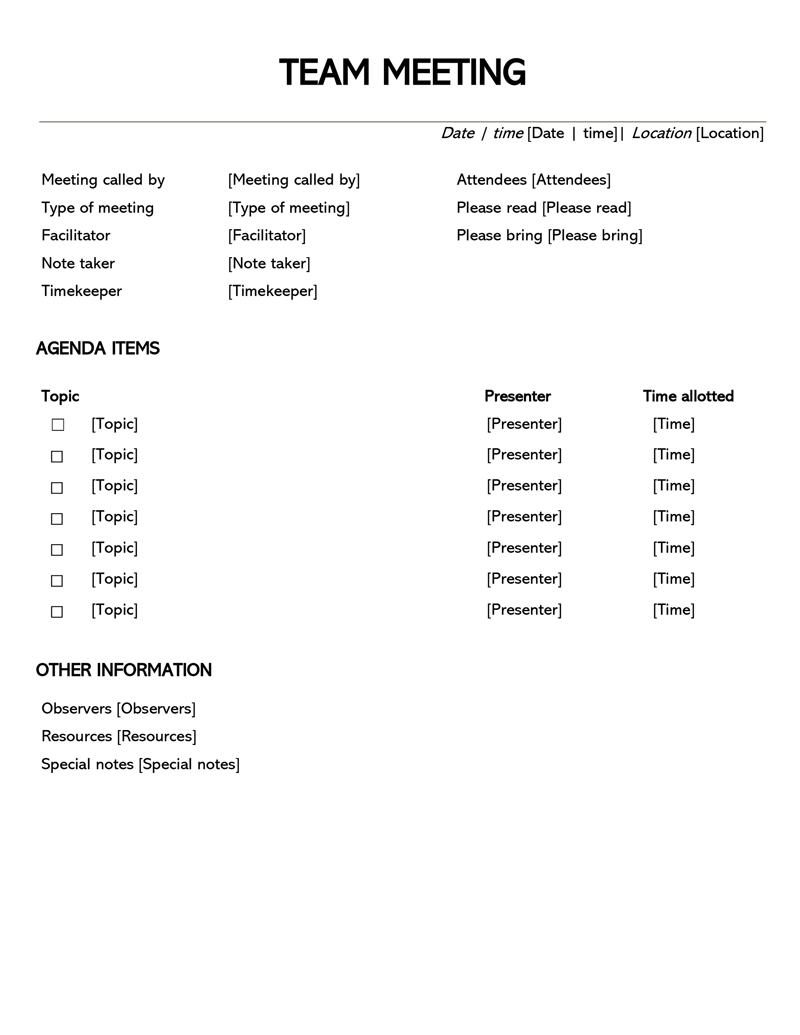
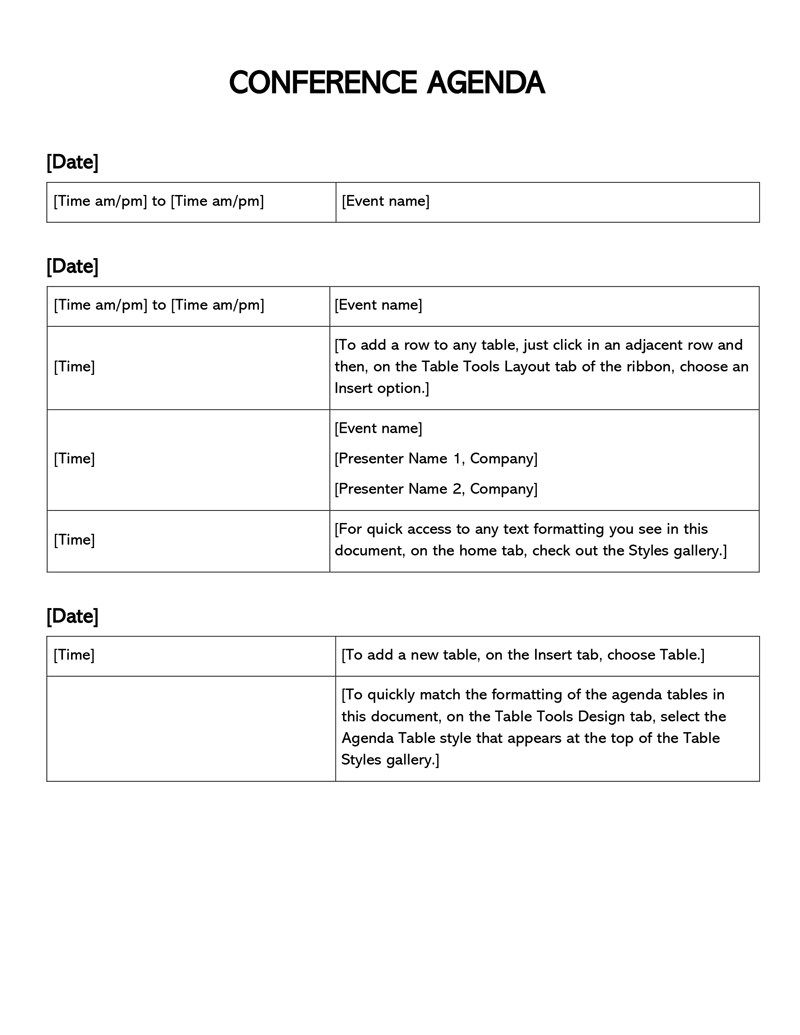
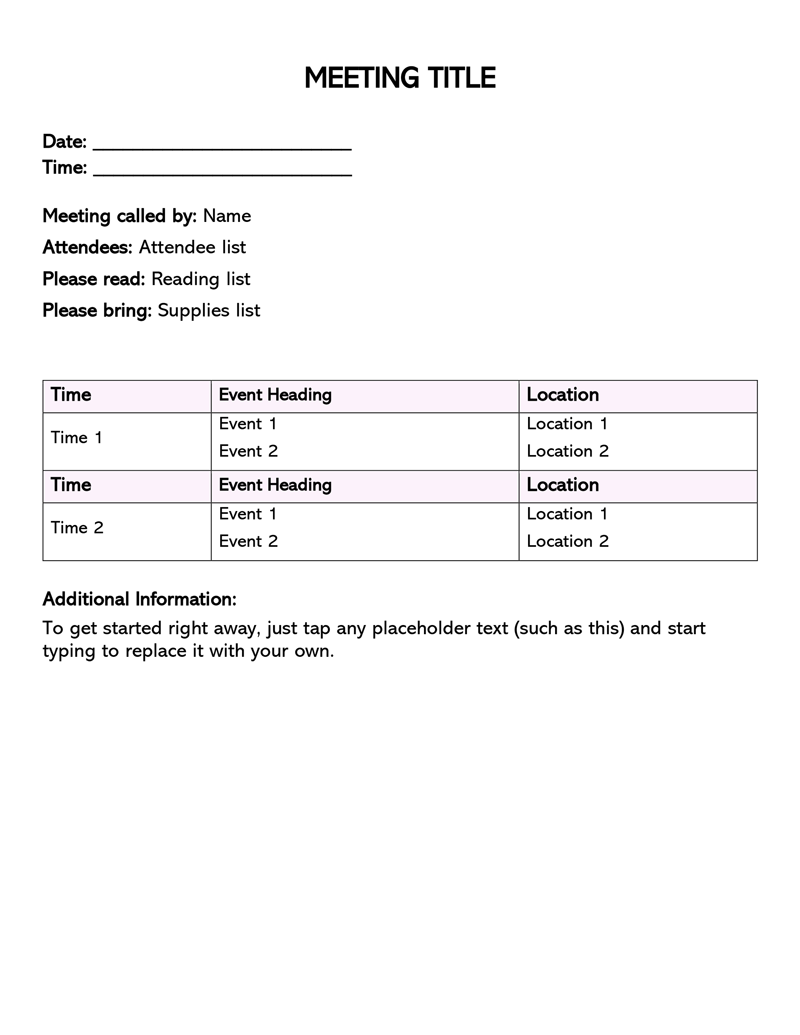
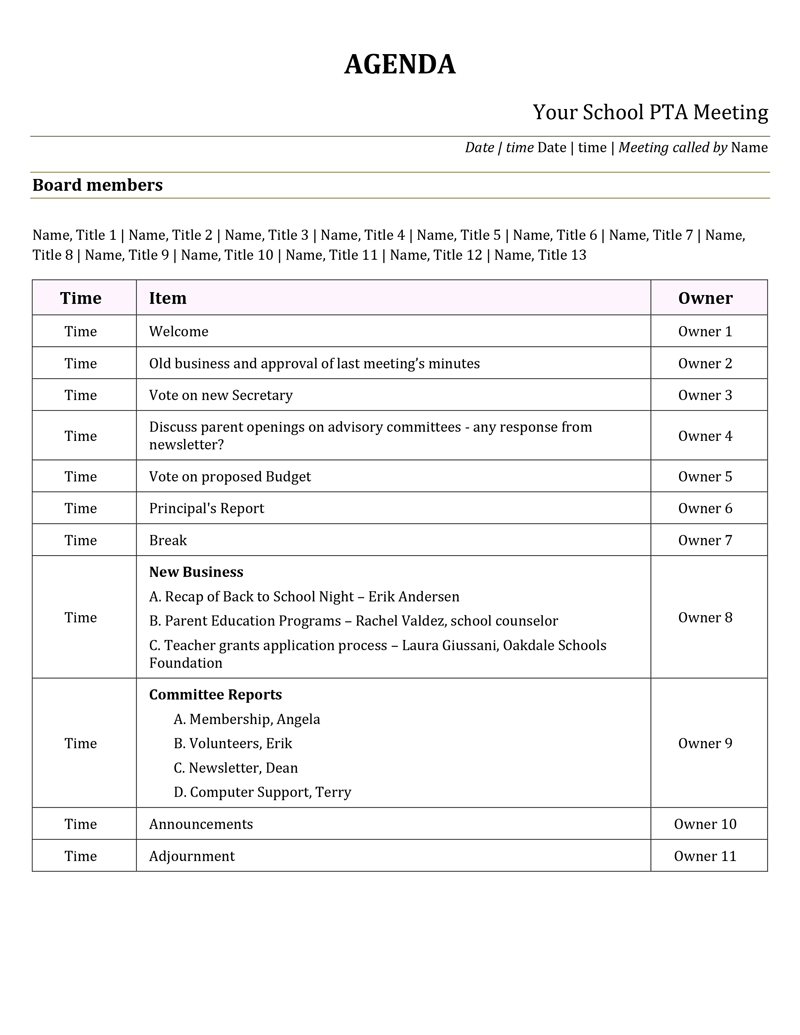
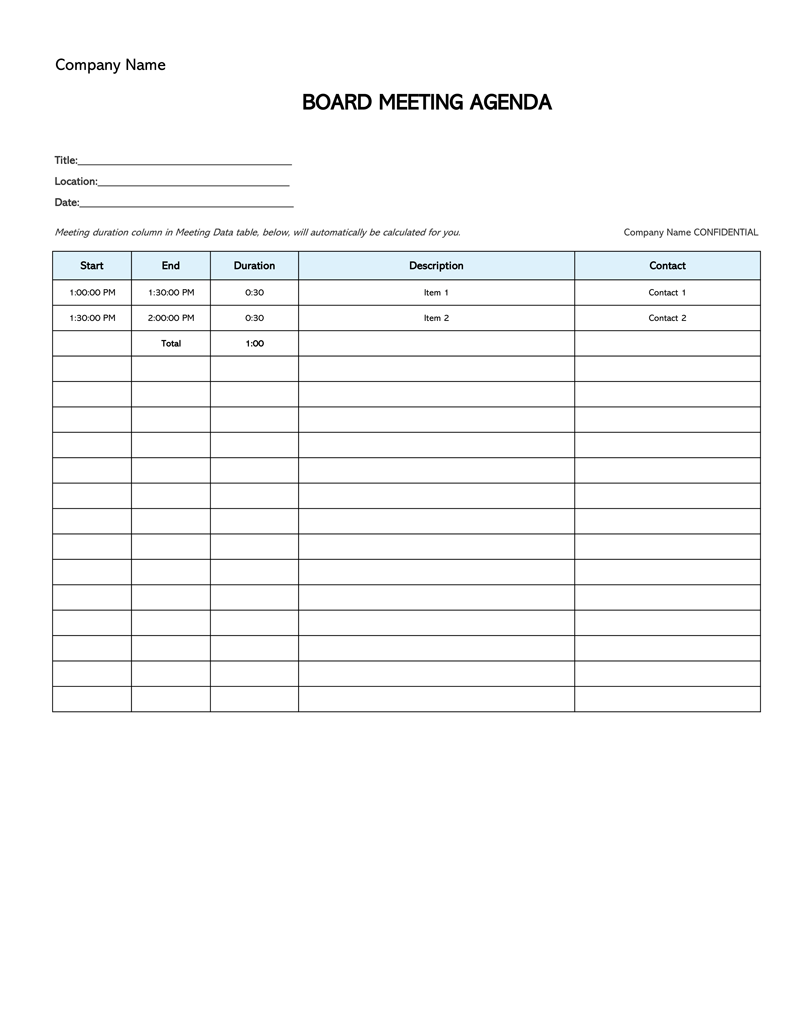
Pre-Meeting Considerations
The board secretary must prepare the agenda beforehand. In doing this, the secretary must first confirm the purpose of the meeting. Then, select topics that achieve that purpose and receive the issues to be discussed from members of the board. The agenda and minutes for the previous meeting are always excellent for getting information. They also serve as a guide for making time allocations, and they reveal unresolved issues. Finally, it must be forwarded to participants before the meeting to make necessary adjustments until the finalized version is created.
Structure of the Board Meeting Agenda
The structure of an agenda gives an account of the events of the meeting. It is arranged in the order in which the organizer intends to handle it. The heading is usually the section with the most content, while the rest of the document takes an outline format.
Here is an ideal structure you can use:
The heading
A formal agenda should have a standard heading at the beginning of the document. The heading should adequately state the name and address of the institution the board oversees. A proper heading would also have the details in terms of the date, time, and location.
Call to order
The meeting starts with the board’s chairperson announcing the call to order. It is usually announced by the board’s chairperson, “The meeting will now come to order”. The secretary records the time the call to order was made and documents it as the official start. After the call is made, other preliminary activities, such as introductions and remarks, are observed.
Changes to the agenda
At this point, the chairperson asks for modifications in terms of items to remove or add from and to the plan. Board members can suggest discussion items, action items, or reports to add or remove from the plan.
Approval of minutes
Board members of an organization owe the organization a duty to ensure the minutes of the meeting are adequately documented. This is why their approval has to be an item on the agenda of the next board meeting.
The secretary would make copies of the minutes of the last meeting available to the board members, and they would have the opportunity to edit the minutes as the board formally approved them.
Reports
In a board meeting, the board receives reports from different people. The first report to be taken is usually the report from the executive director, where he gives a general overview of the state of the business. The financial director of the business also gives the financial report, and committees also present their reports to the board.
Discussions usually start at different points in this part of the meeting:
Old business
This is also known as an open issue. Here, matters that are unresolved are discussed. In preparing the plan, unresolved or previously opened matters are placed in this section. Then, the board attempts to resolve those matters before proceeding.
New business
This part is where the board discusses new issues and possible ways to resolve those issues or starts taking action to resolve the issues. Action may be assigning them to a committee or postponing deliberation for later.
Comments and announcements
This is where “any other business” is considered. Matters that have not been raised but require little deliberation. Issues that need to be added to the agenda of the next meeting are raised here. At this point, members are allowed to make comments and announcements to the board that could not have been made in the heat of the moment.
Adjournment
The board’s chairperson states the time the meeting closes and shares other useful information, like the date and time for the next one. He then adjourns the meeting. The structure highlighted above already shows the importance of a board meeting agenda. In addition, the procedure to follow is highlighted; it is more likely to be productive.
Planning and Making a Successful Meeting Agenda
Mistakes on your agenda can make the meeting less successful than you expected. These are some tested tips for creating successful agendas the right way:
Organize the agendas logically
The arrangement of items to be discussed has a massive effect on how well the meeting will go. A logically arranged agenda would keep board members interested and participating. In the same way, a poorly organized one could have a downward effect on participants’ productivity.
Renew your approach
Rather than conventionally planning your meetings, consider stepping out of the norm a few times. Use innovative ideas to stimulate your audience. You can find some innovative ideas that have worked before, or you can develop your own.
Include the purpose of each plan
In place of just putting topics as items on a list, consider including the purpose of each topic on the agenda. This would guide board members and help maximize their attention throughout the meeting.
Limit each plan
Specify the time for each item. This would let members know when an issue has dragged past average time and would postpone, discard, or resolve the matter to move on to other things.
Beware of overloaded information
You need to be careful with the amount of information you feed your board members. In any section where you give them lots of information, they quickly burn out or lose interest. This dramatically reduces the amount of productivity and participation you’d be able to get from them through the meeting.
Here are some tips for preventing this:
Be specific
All the information you pass to board members in documents or reports should be concise and only contain what they need to understand what is going on. Giving your board members all the information available will drown out their productivity. Furthermore, such information would make them omit the essential parts of your shared information.
Spend less time on daily routine items
Instead, allocate more time to items on the agenda that have critical border issues regarding the company. This would create time for board members to deliberate and make quality decisions on the organization’s essential matters.
Don’t stack lots of information on your agenda
Avoid stacking single items, like reports. Likewise, avoid pushing lots of information, like reports on your members, while other matters are unattended. You will lose their attention and participation in the meeting if you do.
Focus on the primary purpose
Ensure that the content of the meeting is in sync with the organization’s primary purpose. In addition, as the organizer, you must ensure that the meeting is helpful to the organization. A general tip is to prioritize issues that affect a more comprehensive number of people on the board.
Ask for new ideas and recommendations
A board is more than just the group’s chairperson; it includes all board members. The items on the board should be a collection of items that the board should decide upon at the suggestion of all members. When planning a meeting and developing the agenda, receive ideas and recommendations from other board members.
Send the agenda before the time
Sending your agenda and other essential documents to board members ahead of time is good practice. This gives the board members time to prepare for the meeting and make decisions from a place of knowledge. Allowing them to make informed decisions means the board’s decisions are better for the company.
Taking effective minutes
As the board’s secretary, another essential duty you have is to take the minutes of meetings. The minutes are an accurate record of what transpired. They are taken by the board’s secretary and contain the key issues discussed, the resolutions, votes, and other essential notes.
Besides being a legal record of what happened, minutes would also always be there to answer questions in the future about why the board made the decisions it did.
Tips for Taking Meetings Minutes Effectively
There are some tested tips for taking effective minutes, as follows:
Sign in system
Minutes include an account of all persons in attendance. To reduce room for error in attendance at meetings, set up a sign-in system to register members as they enter, and attendance is taken.
Don’t spare details
Minutes are significant to an organization for legal purposes and other reasons to aid the organization’s growth. If you’re tasked with taking down the minutes of a meeting, do not take the role for granted. You must make sure your record captures all the essential details.
EXAMPLE
You should include essential details such as when the meeting started and the names of people who attended. Some other essential details to capture are people who moved, the person who recorded the minutes, the agenda, and other vital details.
Get minutes approved and distribute them
After taking down and finalizing the minutes, the secretary must get the final draft approved and signed by the board’s chairperson. The final copy should be well backed up, and copies of the approved minutes are to be distributed to board members.
Use a technological approach
In the present age, a board secretary should use advanced technological tools. First, this is important because technological tools for note-taking and similar duties would make the secretary’s work multiple times easier.
Today, there are virtual meetings and similar applications of technology that a board secretary can use to carry out its functions and to keep learning as the workspace keeps evolving.
Conclusion
Board meetings are too important to be productive. If you have the chance to be tasked with creating the agenda for one, don’t let the next meeting be unproductive. If you apply the tips highlighted in this article, your meetings will be a lot more productive. If you’re still confused about where to start, download our collection of free templates.












